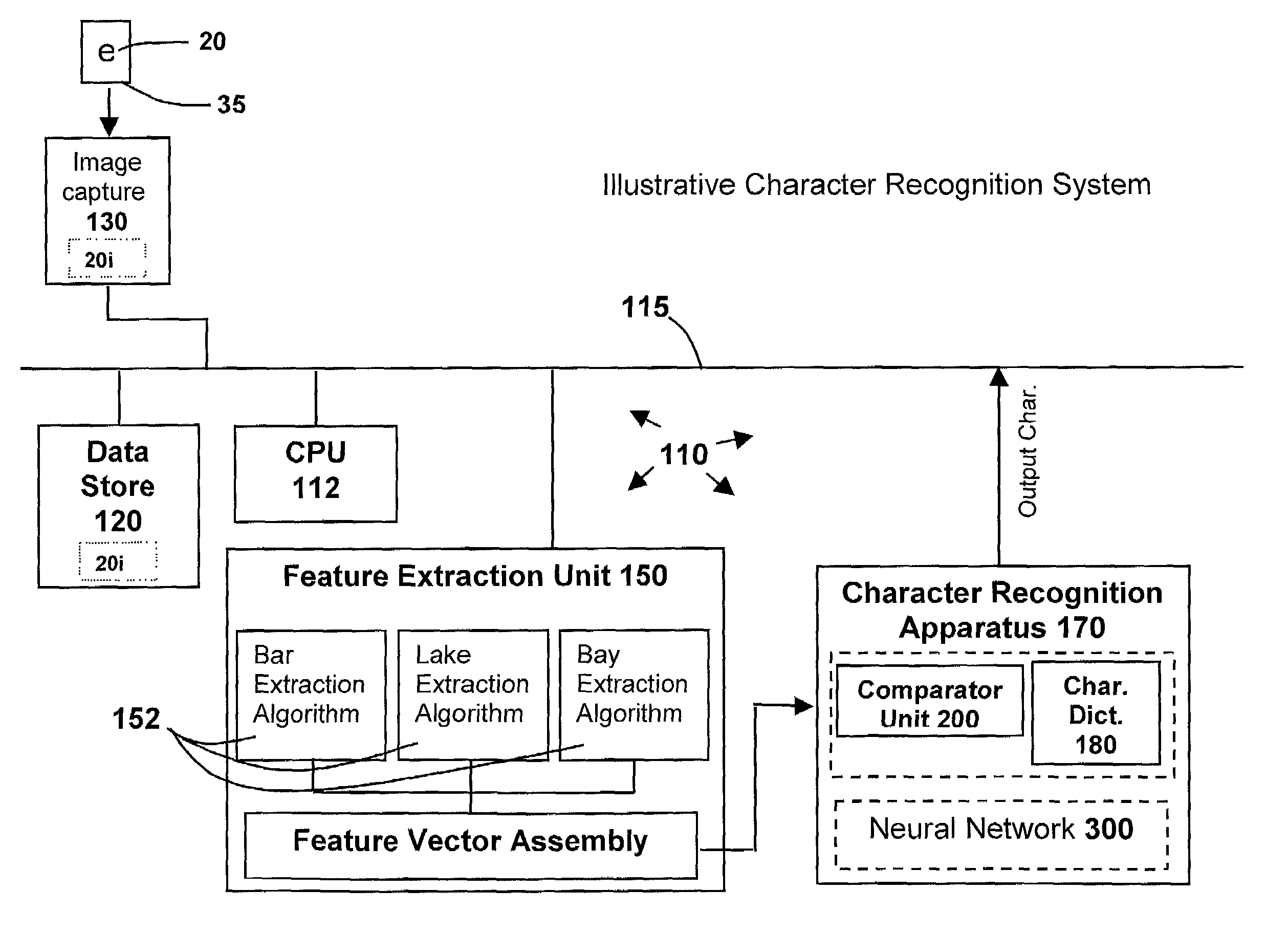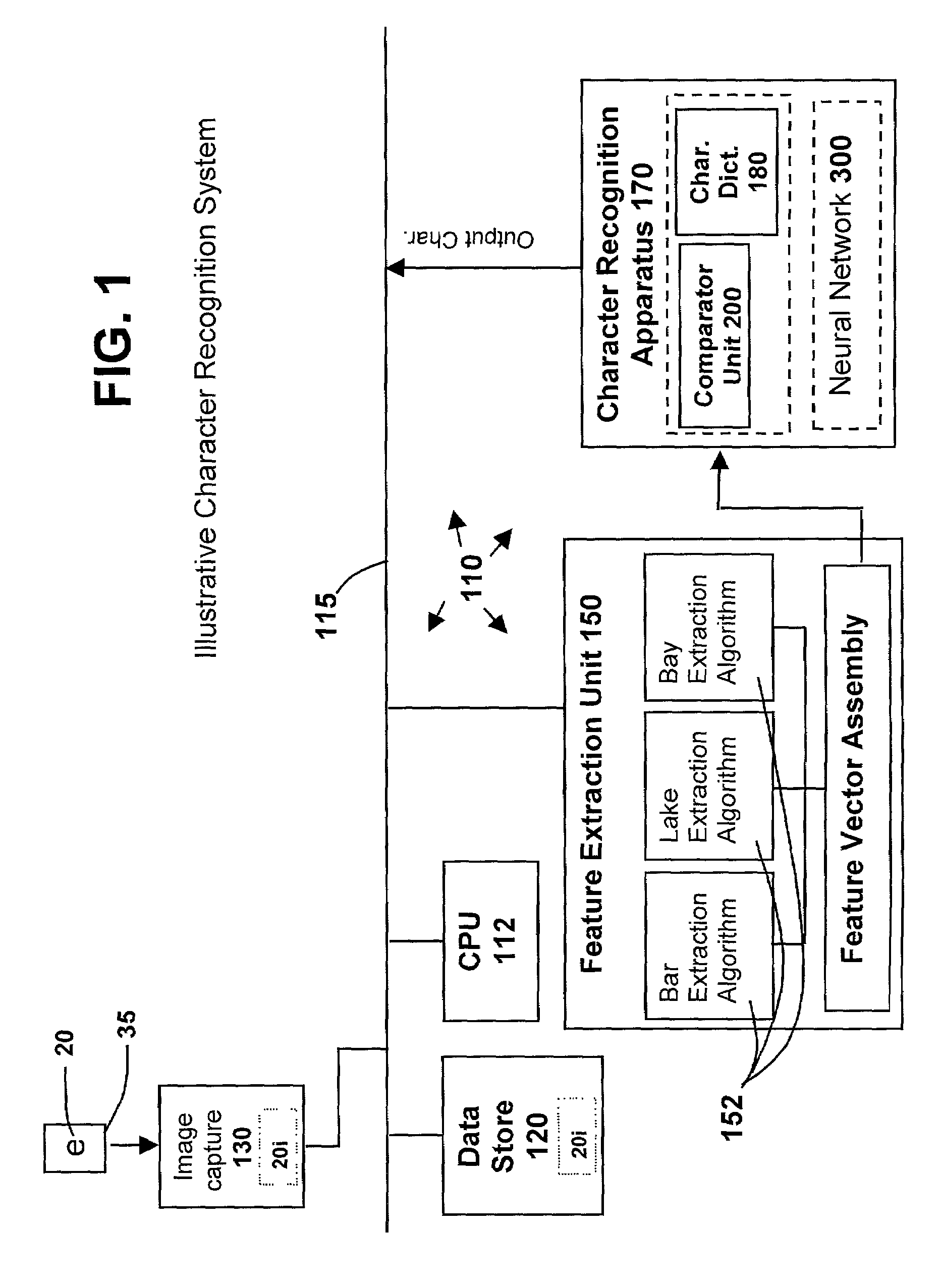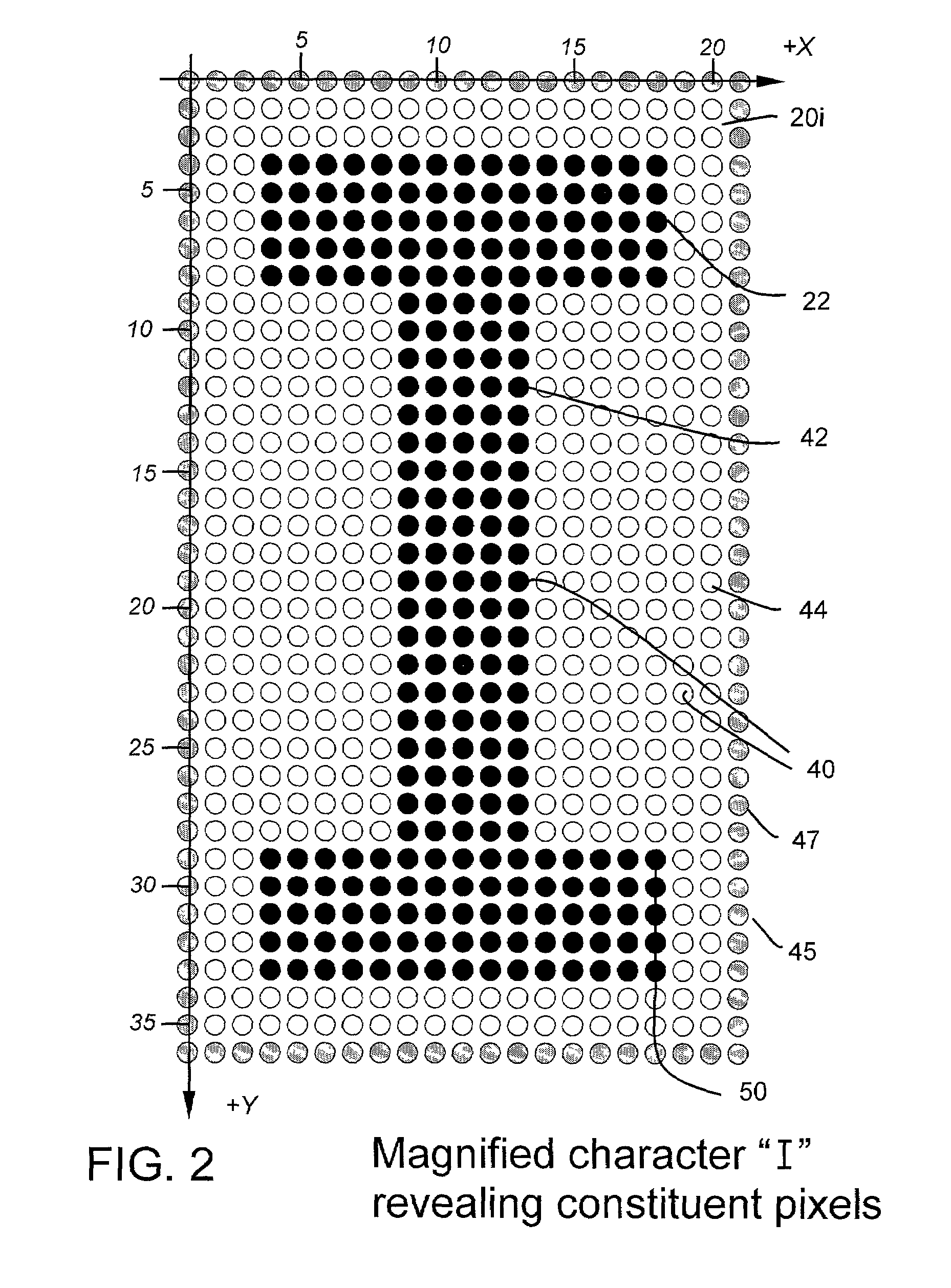Character recognition system and method using spatial and structural feature extraction
a character recognition and structural feature technology, applied in the field of character recognition systems and methods using spatial and structural feature extraction, can solve the problems of limiting the base on which one character can be distinguished from another, affecting the signal-damaging effect of noise, and reducing the ability of positive character identification, so as to improve the capacity for positive character identification, less susceptible to noise effects, and greater tolerance for deviation
- Summary
- Abstract
- Description
- Claims
- Application Information
AI Technical Summary
Benefits of technology
Problems solved by technology
Method used
Image
Examples
Embodiment Construction
[0060]The following description of a character recognition system and method, and various implementations thereof, is illustrative in nature and is therefore not intended to limit the scope of the invention or its application of uses.
[0061]Referring to FIG. 1, an illustrative character recognition system 110 includes a central processing unit (CPU) 112; a bus 115, through which various system components are communicatively linked; a data store 120; image acquisition apparatus 130 (e.g., a camera and / or OCR scanner); a feature extraction unit 150; and character recognition apparatus 170. In one set of alternative implementations, the character recognition apparatus 170 includes a character dictionary 180 and a comparator unit 200. In another set of alternative implementations, the character recognition apparatus 170 includes a trainable neural network 300. Illustrative aspects implementing, alternatively, (i) a dictionary 180 and comparator unit 200 and (ii) a neural network 300 are ...
PUM
 Login to View More
Login to View More Abstract
Description
Claims
Application Information
 Login to View More
Login to View More - R&D
- Intellectual Property
- Life Sciences
- Materials
- Tech Scout
- Unparalleled Data Quality
- Higher Quality Content
- 60% Fewer Hallucinations
Browse by: Latest US Patents, China's latest patents, Technical Efficacy Thesaurus, Application Domain, Technology Topic, Popular Technical Reports.
© 2025 PatSnap. All rights reserved.Legal|Privacy policy|Modern Slavery Act Transparency Statement|Sitemap|About US| Contact US: help@patsnap.com



